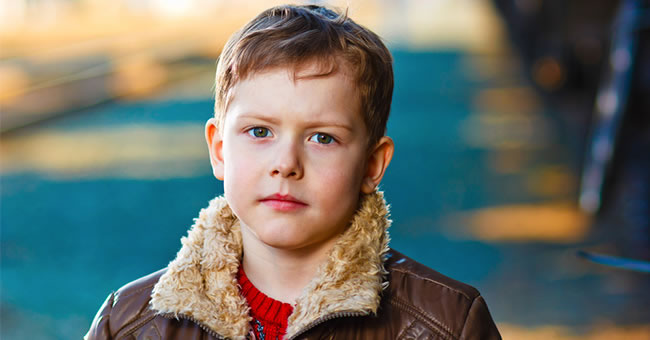
As shared by the National Association for the Education of Homeless Children and Youth (NAEHCY), the U.S. Department of Education's Federal Data Collection for the 2011-2012 school year found that "1,166,339 homeless children and youth were enrolled in public schools" – an increase of 71 percent from the data collected in 2006-2007. You may or may not know of any children or families who are homeless in your class or school, but it's likely that a few of the children you see every day will be homeless at some point before they graduate high school.
At Kaplan Early Learning Company, we endeavor to provide you with quality resources and materials that will help you assist homeless children and families. Whether you're a caretaker, teacher, or principal you can help children overcome the effects of being homeless by understanding the different characteristics associated with homeless children and how to appropriately respond. We've provided a variety of tips, resources, and related materials you can browse for more information about helping homeless children and families.
What You Can Do
One of the first things you need to know in order to be able to help homeless children and families is the definition of homelessness in regards to children. Head Start and all public schools in the United States use the following definition of homelessness: "children and youth who lack a fixed, regular, and adequate nighttime residence... specifically includes children and youth living in shelters, transitional housing, cars, campgrounds, motels, and sharing the housing of others due to loss of housing, economic hardship, or similar reasons" (NAEHYCY).
Once you understand what kind of living conditions are considered to be a part of the definition of homelessness, you can learn about general characteristics typical of children who are homeless. The National Center for Homeless Education, the National Association for the Education of Homeless Youth and Children, and the National Law Center on Homelessness and Poverty collaborated to write a brief that shared common signs of homelessness students may display, including the following:
- Lack of Continuity in Education – Children have moved around a lot and attended a number of schools. They often haven't developed the skills many of their peers exhibit.
- Poor Health and Nutrition – Hoarding of food, consistently falling asleep in class, and a lack of medical records are all examples of signs that children may exhibit in this category.
- Transportation and Attendance Problems – Children are often absent or tardy and don't participate in field trips or other school activities.
- Poor Hygiene – Hair is often unwashed and children wear the same clothes for days at a time.
- Lack of Personal Space After School – Children consistently fail to complete or turn in homework. They also don't have basic school supplies or are very protective of the materials they do have in their possession.
- Social and Behavioral Concerns – Children who are homeless may have poor self-esteem and self-confidence or find it difficult to trust people.
- Reactions or Statements by Family Member or Child – When asked about a current address, they get flustered and angry or come up with excuses for why they can't remember it offhand.
How to Respond in Early Care and Education Environments
If a case of homelessness is confirmed, it's important that educators and other ECE professionals work to help the child have a stable environment at school. The Crisis Manual for Early Childhood Teachers suggests the following methods:
- Take a picture of the child's parent or guardian. This will help with any separation anxiety and is something that the child can keep with them all day.
- Establish a consistent and stable routine. Using the same room and maintaining a consistent, yet flexible routine will help the child feel safe and in control.
- Help the child feel valued by reinforcing their self-esteem. Being homeless means the child will feel helpless and insecure. Be sure you make an effort to help them feel valued and special by greeting them at the door, talking with them, and showing interest in their thoughts and ideas.
- Give children plenty of opportunities to make choices and express themselves. Being able to make choices will help children feel in control of what will happen, and opportunities for self-expression can help children work through the emotions that come with being homeless.
- Try to establish trust while also preparing the child to move on to another program. Homeless families and children are often in transition, so try to spend as much one-on-one time with the homeless child as possible to establish trust in the time they are in your care. You can prepare the child to move on once the family has permanent housing by talking to the next teacher or maintaining a friendship with the family.
- Make sure the child and his or her family knows who they can reach out to for help. Encourage the child to talk to you or a guidance counselor, and give the child's family contact information for community agencies that assist homeless families; mental health and family service centers; and food, clothing, and housing support services.
Free Resources
Online Articles
"The Characteristics and Needs of Families Experiencing Homelessness"
http://files.eric.ed.gov/fulltext/ED535499.pdf
"Effects of Poverty, Hunger and Homelessness on Children and Youth"
https://www.apa.org/pi/families/poverty.aspx?item=1
"Facts on Trauma and Homeless Children"
http://www.nctsnet.org/nctsn_assets/pdfs/promising_practices/Facts_on_Trauma_and_Homeless_Children.pdf
"Homeless Children: The Hard Times Generation"
http://www.cbsnews.com/news/homeless-children-the-hard-times-generation-20-06-2011/
Relevant Websites
National Center for Homeless Education
http://center.serve.org/nche/about.php
America's Youngest Outcasts
http://www.homelesschildrenamerica.org/index.php
National Center on Family Homelessness
http://www.air.org/center/national-center-family-homelessness
StandUp For Kids
http://www.standupforkids.org/
National Association for the Education of Homeless Children and Youth (NAEHCY)
http://www.naehcy.org/
National Law Center on Homelessness and Poverty
http://www.nlchp.org/
